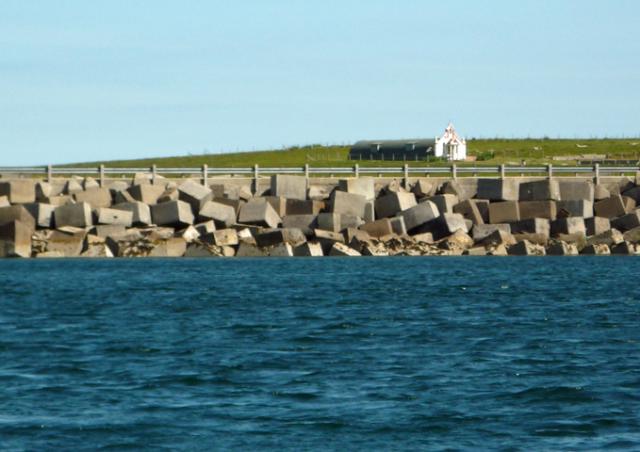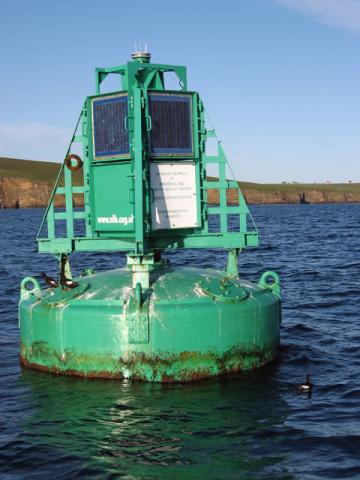

History of Scapa Flow
Scapa Flow, sheltered by the Orkney Mainland, Hoy and Longhope, Graemsay, Flotta, South Ronaldsay and Burray is one of the great natural harbours/anchorages of the world, with sufficient space to hold a number of navies. Viking longships anchored here over a thousand years ago, although it is best known as the the site of the British Navy's base during both world wars. It covers an area of 140 square miles of water with a sandy bottom and relatively shallow (not deeper than 160 feet and most of it about 70 feet deep).
On the 9th July 1917, the battleship HMS Vanguard exploded and sunk north of Flotta, with a loss of 843 lives (and only two survivors). Its site is protected by the Protection of Military Remains Act, meaning it can not be dived on, except by naval divers. At the end of the First World War, 78 ships of the German Naval fleet were interned in Scapa Flow awaiting a decision on their future. However, on the 21st June 1919, Ludwig von Reuter, who was the German officer in command at Scapa Flow, gave the order to scuttle the ships to prevent their falling into British hands. Fifty-one ships sank, and most of these were recovered by salvage companies. The shipwrecks that remain are now popular dive sites, with divers traveling from all over the world to dive in Scapa Flow.
The most well-known event in
Scapa Flow's history was the
sinking of the HMS Royal Oak, on
the 14th October 1939, after a
torpedo attack by the German
U-Boat U47. 834 lives were lost
out of the crew of 1200. Like the
Vanguard, the wreck is a
designated war grave. A buoy
(right) marks the site of the
wreck.
In response to this, British Prime
Minister Winston Churchill ordered
the building of four causeways,
called the Churchill Barriers, along the eastern approaches to Scapa Flow. A great deal of the workforce came from Italian prisoners of war, who built the beautiful Italian Chapel on Lamb Holm (below).
In more recent times, Scapa Flow has become a key site in the North Sea oil industry. Flotta oil terminal processes oil from the Piper, Claymore and Tartan oilfields, while ship-to-ship oil transfers are also regularly carried out in Scapa Flow.
In an ever-changing world, renewables now feature, with facilities at Lyness and a wave action nursery site near St. Mary's.

